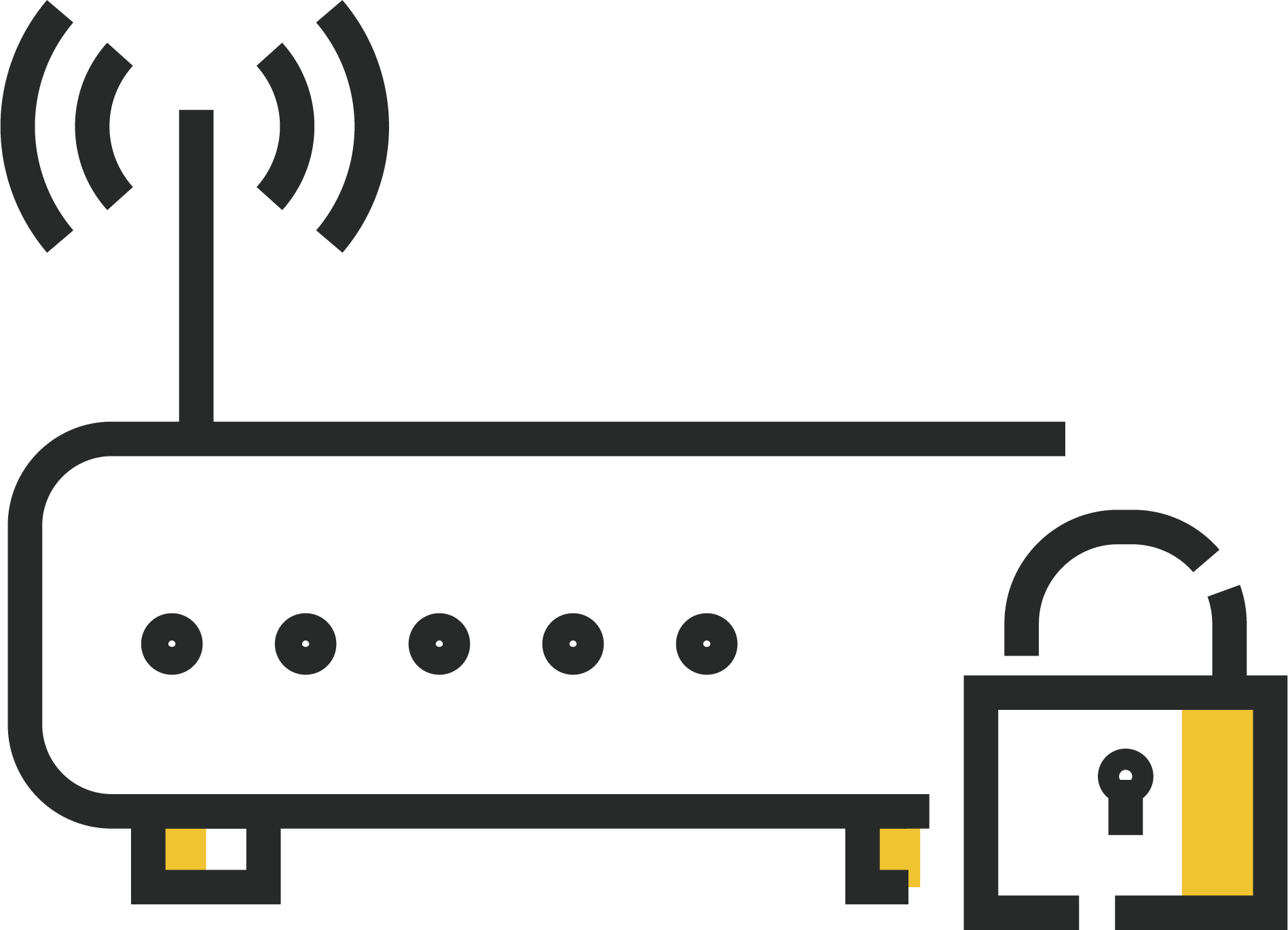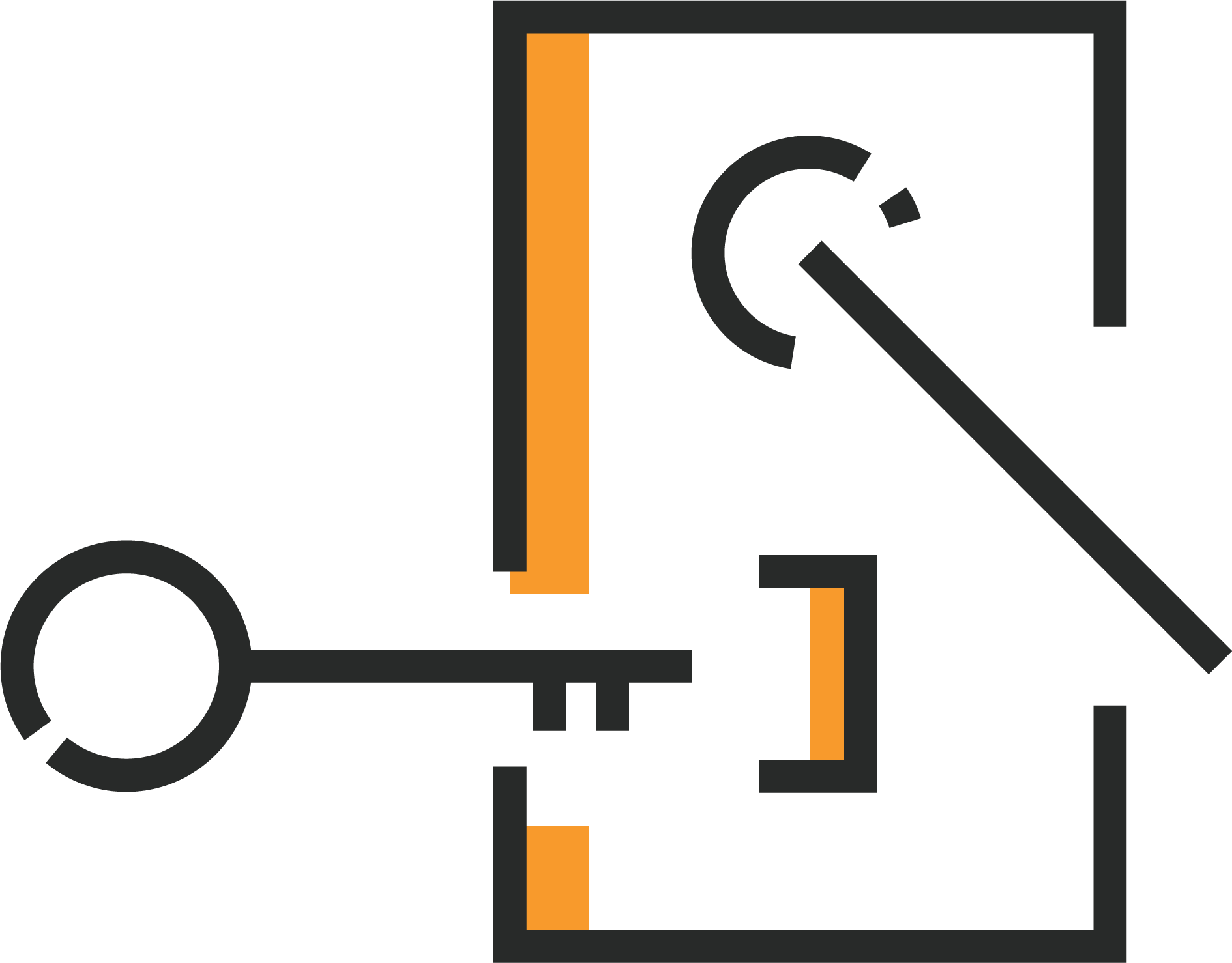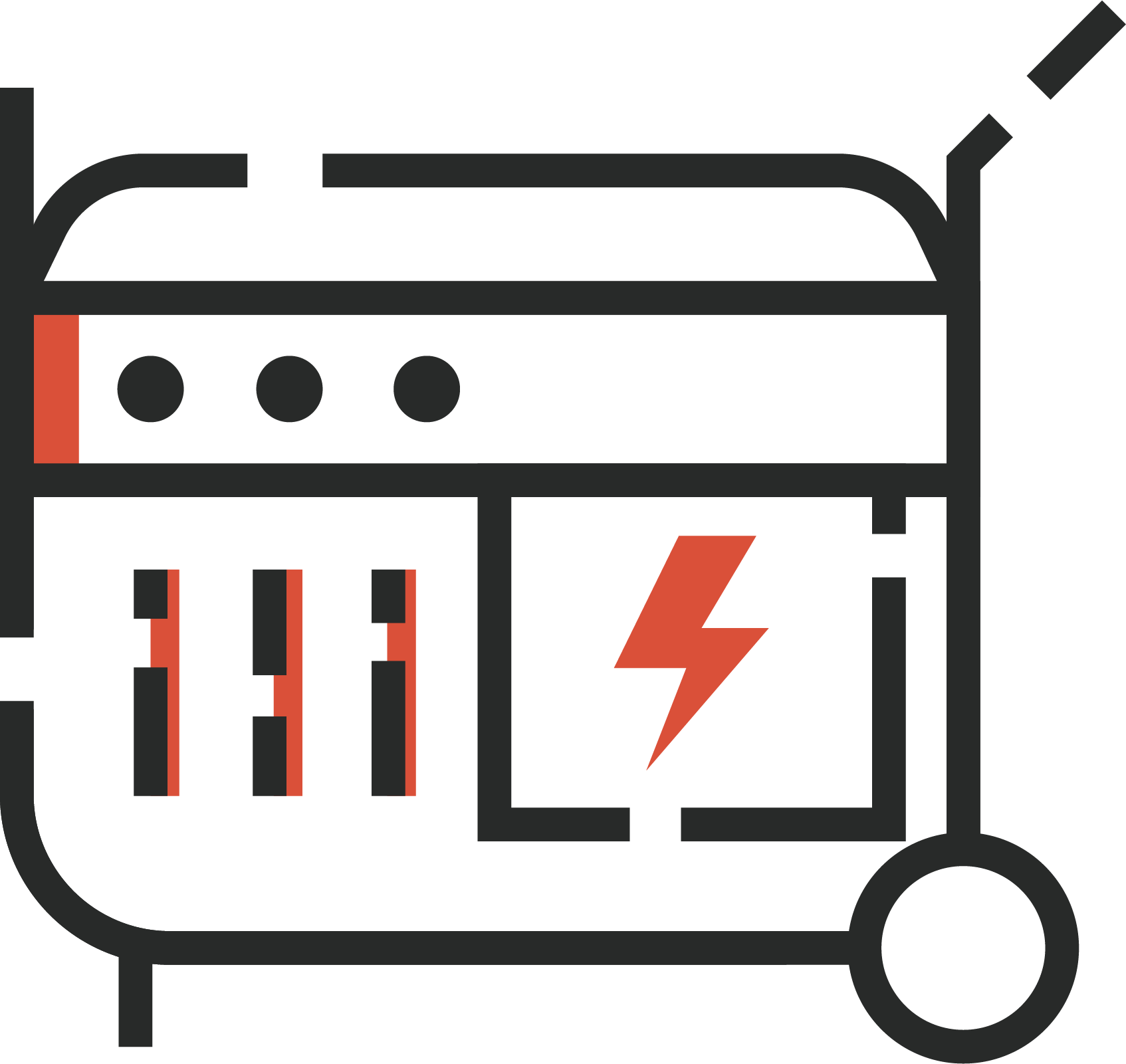Although the American dream is still alive and strong, Americans are unfortunately facing increasing threats in 2024, seemingly more so than ever before.
The past year has seen some of the worst data breaches, attacks on public infrastructure, severe weather, and other events that cost American taxpayers countless billions of dollars.
Keeping yourself, your family, and your home protected from all of these threats may seem like a daunting task, but in reality, all it takes is a bit of preparedness.
With the right mindset, accurate information, and the right protective tools and services, safeguarding everything from your finances and identity to your home and even your life becomes much easier. Though there may be tough times ahead, there are ways to protect yourself from harm. Let’s find out how.
Contents
Looking Back: The Biggest Threats in 2023
Looking back on 2023, there were plenty of huge threats faced by both individuals and businesses alike.
According to sources, such as Visual Capitalist, some of the biggest threats include a disruption in the global supply chain, growing political and social unrest, an energy supply crisis, and cyberattacks. Let’s look back on the past year and some of the biggest threats we faced.
Digital Threats
2023 saw some of the worst data breaches and threats to public utilities in history, with several massive data breaches that exposed tens of millions of customer’s data.
One of the worst data breaches of 2023 affected the Telecom company T-Mobile, with over 37 million customer accounts being accessed and compromised, due to an API attack.
An API attack refers to an attack on application programming interfaces, or in other words, mechanisms that allow two pieces of software to communicate with each other. An API is a type of software that sends messages or information back and forth between a user and an app or website.
One such API attack on the T-Mobile infrastructure on November 25, 2022, was somehow not discovered until January 5, 2023, with yet another breach happening from February until March of that same year.
Although the exact result of these data breaches is not known on a per-customer basis, in a letter released to affected customers by T-Mobile, the company stated:
“The information obtained for each customer varied, but may have included full name, contact information, account number and associated phone numbers, T-Mobile account PIN, social security number, government ID, date of birth, balance due, internal codes that T-Mobile uses to service customer accounts (for example, rate plan and feature codes), and the number of lines,”
Yet another major data breach occurred when the DNA testing firm, 23andMe, was attacked by malicious actors. It was later confirmed that the accounts of over six million clients were compromised, resulting in hackers gaining access to ancestry and family lineage records.
That’s information that can then be used against you in various ways, not the least of which is to steal your identity. And yes, identity theft is another growing threat. For example, between 2019 and the end of 2023, Americans saw a 68.3% increase in identity theft incidents.
Whether we’re talking about T-Mobile, 23andMe, or any of the other large data breaches to have occurred in 2023, one thing is clear, your personal and financial information is at risk from those looking to take advantage of vulnerabilities. This means that keeping yourself protected against online threats in this digital age is now more important than ever before.
In 2023 alone, there were more ransomware attacks in the first nine months than in all of 2022, and these numbers are only set to increase as the years go on.
Increasingly Severe Weather and Climate Disasters
Another one of the largest threats faced by Americans in 2023, a threat that will only grow in severity as the years go on, is Mother Nature herself. Increasingly frequent and severe weather events are not only putting our lives at risk but our financial well-being as well.
To put this in perspective, 2023 the USA saw 25 separate climate and weather disasters that caused over $1 billion in damages per weather event, with total damages nearing $80 billion across the board, along with just under 500 deaths.
As far as weather is concerned, one of the top threats in 2023 was flooding, with hurricanes, typhoons, and other related weather events causing widespread flood damage, particularly to coastal areas, but further inland as well.
This clearly illustrates the need for us to be better protected and prepared for such weather events, as severe weather events are only predicted to become much worse and more frequent in the coming years.
Top Threats for 2024
The year 2024 will see many of the same threats as 2023, but these threats are evolving, and this means that the methods used to protect ourselves need to evolve and improve as well. Here is a look at some of the biggest threats Americans are facing in 2024.
Cyber Crime Threats in 2024
Cyber crime, which is crime that is committed digitally, with the API attacks listed above being prime examples, is only becoming more prevalent in this age of smart devices and global connectivity. As time goes on, your information, whether personal or financial, is increasingly under attack, and that puts you at risk, especially as far as identity theft is concerned.
This issue is especially pronounced in the USA, as current reports indicate that Americans suffer a 300% higher identity theft rate than people residing in other countries.
For example, according to IC3, cybercrime resulted in losses of $2.7 billion in 2018, with losses exceeding $10 billion in 2022, a clear indication that cybercrime against both individuals and larger entities is on the rise, and will continue to increase over the coming years, as indicated by a plethora of industry experts.
Remember, these losses don’t just affect big businesses, as these statistics account for both large-scale cybercrime, as well as that affecting individuals directly. Total cybercrime losses for this year are predicted to be a whopping $452 billion by the time 2024 comes to a close.
The issue with cybercrime as time goes on is that the criminals and the technology being used to steal personal information, identities, money, and more are becoming much more sophisticated.
For instance, artificial intelligence now plays a large role in cybercrime threats.
The Threat of Artificial Intelligence
Although artificial intelligence may have many benefits for various market sectors, it also benefits those criminals looking to execute cyber-attacks on innocent people and institutions. One of the biggest issues is that artificial intelligence is much faster, more efficient, and more capable of hacking into various systems than human hackers.
The speed and efficiency at which artificial intelligence can infiltrate a variety of systems that were previously thought secure is absolutely alarming. For instance, according to Forbes, the occurrence of social engineering cyber attacks increased by 135% between January and February of 2023, which directly coincides with the adoption and integration of ChatGPT.
Social engineering cyber-attacks occur when a hacker deceives, manipulates, or otherwise influences a person using digital means to gain access to and control over a device, such as a computer or smartphone, with the aim of stealing personal and financial information.
A new survey conducted by Nationwide showed that 8 out of 10 or 82% of Americans are aware of and concerned about the threat that AI poses to their security, especially as far as malicious attacks and attempts at identity theft are concerned. Being aware of phishing scams and being able to identify and protect yourself from them, is therefore becoming increasingly important.
IoT and Application Vulnerabilities
At this point, there are over 17 billion IoT devices in the world. These are devices that connect to networks to transmit data. This could be any kind of sensor or gadget designed to gather data and in one way or another transmit it through a digital network. This could be something as simple as your WIFI and Bluetooth-enabled step counter that you wear to exercise every morning.
These are all devices that malicious actors can potentially infiltrate to gain access to your sensitive information. A growing trend is integrating various smart home devices with alarm systems, which may seem convenient but may also allow criminals to become privy to your sensitive information.
For instance, if you have a Wi-Fi thermostat that automatically sets the temperature to a lower level when you leave for work, and it is activated when the connected alarm system indicates that no one is in the home, it leaves your alarm system vulnerable to infiltration through the much less protected thermostat. What it comes down to is ensuring that your security alarm panel, as well as all of the devices connected to it, have been tested to ensure maximal digital security and safety.
What You Can Do to Protect Yourself from IoT Application Vulnerabilities
Luckily, there are some things that you can do to protect yourself from IoT device infiltration.
- First and foremost, never use the default passwords that come with your security cameras, smart televisions, routers, and other such devices. Always use strong passwords, and if you have trouble coming up with good passwords or remembering them, a password manager can always help.
- Another great tip is to always use a secondary network for IoT devices, one that’s not connected to your primary network. So, if the IoT devices get hacked, at least your main network hasn’t been compromised.
- Security also comes down to each and every single device, which means that ensuring all software on all devices is up to date, particularly as far as security patches are concerned, is vital to your safety.
- Another invaluable way of protecting yourself is to control the access that your kids have to applications. By using parental monitoring tools, you can make sure that your kids aren’t getting up to anything that could compromise their or your information.
Malicious LLMs
Another massive threat is malicious LLMs or large language models, which are pieces of AI that can gather information, learn, adapt, and produce content. New pieces of artificial intelligence, such as ChatGPT, when properly manipulated, can be used to write a variety of viruses, malware, and ransomware.
Technically speaking, artificial intelligence programs like ChatGPT are designed specifically to prevent these kinds of actions from occurring.
However, criminals have figured out how to manipulate these artificial intelligence programs in such a way as to create malware and ransomware programs that function very efficiently. Indeed, there are various studies that prove that various LLMs can be used to create malicious software.
What You Can Do to Protect Yourself from Malicious LLMs
Malicious LLMs can be hard to protect against, but there are some invaluable steps you can take nonetheless.
- Seeing as malicious LLMs have the ability to create ransomware, malware, and more, your best bet is to install high-quality virus/malware detection and elimination software on your computer.
- Using a virtual private network can prevent LLMs from finding out your true identity and from gaining access to sensitive information.
- It all comes down to being vigilant and taking a step back to think. If something looks suspicious, whether an email, text, link, or download file, treat it with maximum caution.
AI-Generated Voice Scams
Another threat related to artificial intelligence is that of the voice scam. Artificial intelligence can be used to scan and analyze someone’s voice, and then accurately recreate it in such a way that it is virtually indistinguishable from the real person.
According to experts, AI-generated voice scams will only continue to rise as the years go on. People from all around the world, from India to Canada and the United States are being targeted by AI-generated voice scams.
For example, you might get a call that sounds like it’s one of your family members asking you to send them money or information due to some kind of dire circumstance or emergency when it’s really an artificially generated voice designed to trick the victim into giving up crucial information.
It’s just one of the methods that criminals are using to contribute to the 150% growth in fraud in the past two years.
What You Can Do to Protect Yourself from AI Voice Scams
Although AI voice scams are posing a greater risk to security as the years go on, there are luckily some things that you can do to protect yourself.
- Always set your social media accounts to private. We often post important clues and information to our social accounts inadvertently. This information may then be used against you to gain access to your accounts.
- A great way to protect yourself from voice-cloning scams is to use a codeword. Instead of immediately talking to someone when they call, hang up, and then call back and ask for a predetermined code word. This will allow you to verify the authenticity of the person on the other end of the line.
- The fact is that no matter the measures you take, there is always a chance that an AI voice scam could affect you. If you are a victim of such a scam, then one of the best pieces of protection you can have is cyber insurance.
Social Engineering
Social engineering has for a long time been a problem in cybersecurity, which is the tactic of influencing, manipulating, or deceiving a victim with the aim of gaining control over their computer system, or stealing financial and personal information.
It uses a variety of tricks and manipulative tactics to gain access to a person’s device. Of course, with the advent of artificial intelligence, this issue is becoming much more problematic.
Related to the above point, AI-generated voice scams are now able to gather information much more efficiently without being detected.
Furthermore, as far as email phishing scams are concerned, AI has also allowed these to become much more sophisticated, making it much harder for people to detect whether or not they are scams. Email phishing scams involve criminals sending emails that appear to be from legitimate sources or people, with the aim of deceiving the user into divulging sensitive information, whether personal or financial.
According to Forbes, AI tools have made such attacks much easier, and this includes creating deep fakes, where scammers can mimic a real person to gain trust and access to your financial information.
What You Can Do to Protect Yourself from Social Engineering Scams
There are various actions you can take to protect yourself from social engineering scams, including the following:
- Always check the source and look closely. Anything remotely suspicious should be treated as such. It’s not uncommon for these scammers to resemble large and legitimate companies. One trick they use is to slightly change the spelling of the company or individual’s name. If the source looks suspicious, it’s probably a scam.
- Always check to see what kind of information they already have. If a source that should be trusted is asking you for information that they should already have, chances are it’s a scam designed to gather sensitive data from you.
- Social engineering threats are often designed to seem very urgent, i.e. “if you don’t act right now, something bad will happen.” More often than not, if you take a step back and think about the situation, you’ll realize that it’s nothing more than deception.
- Never provide anyone else with sensitive information, especially as far as finances and passwords are concerned.
Digital Blackmail
According to the FBI, artificial intelligence is now also being used in other ways, particularly for digital blackmail. Digital blackmail involves hackers accessing sensitive data and threatening to release said information to the public, family members, friends, or the police if a ransom is not paid. One of the main examples of this is known as sextortion.
Here, artificial intelligence is being used to create fake images and videos of people performing lewd sexual acts. These scammers then send or show these AI-generated pornographic scenes to their victims, claiming that this information will be shared with friends and family members if a ransom is not paid.
This means that digital blackmail can affect everyone, whether you’ve done something worthy of being blackmailed or not, as the content used to try and force money out of the victim is not real to begin with, thus posing a serious threat to the greater public.
Artificial intelligence can now be used to create deep fakes, which can then be used to execute this sort of digital blackmail against anyone and everyone.
What You Can Do to Protect Yourself from Digital Blackmail
Here are some steps you can take to prevent yourself from becoming a victim of digital blackmail.
- Never post sensitive content that could be used against you online.
- Do not send sensitive content, such as images of yourself, to unknown people or sources. Digital blackmailers often gain access to content that can be used for blackmail simply by pretending to be someone else and asking for it.
- The worst thing you can do in the event that you are being blackmailed is to give in. Once you give in to the criminal’s demands, it will likely embolden them further. Instead, call the authorities. This is especially the case when the content being used for blackmail is AI-generated.
- The best course of action is to increase your security level by updating your devices and security features so that potential hackers cannot access sensitive information.
The behavior of criminals over the years has changed significantly with the advent of artificial intelligence. It’s not that criminals aren’t stealing anymore, but they might not be stealing from the same people, or attacking in the same ways as before. Let’s take a quick look at how threat actor behavior has changed with the use of artificial intelligence.
Malware Threats
Malware, whether generated by artificial intelligence or not, still remains one of the biggest threats to personal and business financial security.
According to ISACA, while cyber-attacks in the past decades were often focused on simply causing disruption and showing that government and financial institutions were not as secure as they thought they were, the aim has now changed significantly towards financial gain.
This means that if you are someone who is in possession of substantial financial assets, then you are at increased risk of malware, both human and AI-generated, which aims to steal your identity, personal information, and financial information.
What You Can Do to Protect Yourself from Malware
There are some steps you can take to prevent malware from gaining access to your devices and stealing sensitive information.
- Always keep your computer, devices, and security software up to date. Your first line of defense is a good malware detection system.
- If you receive suspicious emails with links and are asked to open an image or attachment, think twice, as it could contain malware.
- If you are asked to download something that you don’t trust, such as from a pop-up, stay away from it. Never click on, download, or install anything on your devices that you don’t trust one hundred percent.
- If you are just browsing the web, use a non-administrator account, as these usually have limited permissions, particularly as far as installing new apps or software is concerned. This can prevent malware from being installed on your device.
Ransomware Extortion
Although sextortion was already mentioned above, digital blackmail and so-called digital kidnapping are becoming more prevalent as well.
According to the National Cyber Security Council, AI has had a profound impact on ransomware, and experts all agree that AI will continue to play an increased role in higher amounts of ransomware attacks taking place across the world.
Ransomware steals and encrypts various important files on your computer or other devices. Hackers will then demand that you pay a certain ransom for your information to be released back to you. This type of extortion is unfortunately becoming very common.
What You Can Do to Protect Yourself from Ransomware
The following are methods to protect yourself from ransomware:
- Ransomware takes advantage of sensitive information, so never share any information with any sources that you don’t trust intimately.
- Do not click on links in suspicious emails, open messages from unknown sources, or install any app or software from pop-up windows or emails. These may all contain malware or ransomware designed to hold your device and files hostage.
- If you plan on downloading anything, only use trusted sources.
- If using a public network, a VPN can help keep you protected by keeping your connection anonymous and private.
- In this case, your first line of defense is always a top-tier antivirus and antimalware system.
PowerGrid Attacks
Although not always related to the cyber world, it appears as though attacks on power grids are steadily increasing as well. According to Politico, there were 71% more attacks on power grids in the USA and Canada in 2022 than in 2021.
Furthermore, according to the Threat Intelligence Index Report, energy companies in the USA suffered a whopping 20% of all cyber-attacks committed in the USA. According to the International Energy Agency, cyber-attacks are continuously and increasingly disrupting power supplies and energy-producing systems across the USA.
How to Protect Yourself from Power Grid Attacks
Protecting yourself from power grid attacks is easier said than done, because realistically, this is not a threat directed towards individuals, but rather the power grid. However, there are still some steps you can take to protect yourself if a power grid is compromised.
- Have an emergency preparedness kit in place that will allow you to survive for a prolonged time in the event of a power outage.
- There are many home generators out there designed specifically to keep a homestead operational in the event of a widespread power failure.
- If you have your own power sources, such as solar, making sure you have energy-efficient appliances allows your home power sources to last longer in the event of a power grid outage.
- Make sure to have all relevant documents backed up on a device that is not connected to the grid, and in some cases, physical copies may also be warranted.
- Cyber threats still exist once a power grid is out or compromised, which means that having the right security measures in place is more important than ever before.
Growing Political and Social Unrest in 2024
The world appears to be growing more insecure and dangerous as the years go on. With the tensions in the Middle East, the war in Ukraine, and so much more, there is growing political and social unrest across the world.
There are several sectors where this can be clearly seen, including with election security, crime against people and poverty, and a lack of police response, particularly in the USA.
As you’ll see further below, this massive political and social unrest that the world is experiencing has had serious consequences, and will continue to have even more dire consequences as the years go on.
Election Security
With massive accusations of Russian involvement in previous elections in the USA, it serves to reason that elections are becoming less secure as the years go on.
Once again, a lot of this has to do with the use of artificial intelligence. According to official reports from CISA, artificial intelligence and other forms of software can be used to greatly influence elections.
Artificial intelligence can be used to influence the election processes through the use of chatbots and AI-generated content, by mimicking election offices through voice cloning tools, by creating deep fake videos of election officials, and even by potentially gathering voting information from electronic voting machines. This therefore poses a very real threat to democracy.
How to Protect Yourself from Election Security Threats
Here are some good ways to protect yourself from election security threats.
- Make sure that you are registered to vote where necessary, and that all of your information is correct.
- Never provide any kind of information to unknown sources. If you get phone calls or emails asking for information, your information, in relation to an election, treat it with maximum suspicion.
- Always verify any claims that you see online through various trusted third-party sources. Don’t just believe what you see.
The Proliferation of AI-based Disinformation & Civil Unrest
Another problem faced by the collective American population is that artificial intelligence is making it much easier to reach more people with disinformation.
This spread of disinformation isn’t just relegated to politics and elections but has also infiltrated other parts of the market. For instance, disinformation created by artificial intelligence results in fake lawsuits, forged product capabilities, false product defects, and more. Simply put, it’s becoming much harder to trust what you see and hear.
This is making people more skeptical and untrusting, therefore increasing overall civil unrest. The upcoming 2024 presidential election is already causing a lot of controversy and divisions between various groups in the USA. The use of artificial intelligence to spread misinformation, particularly about political parties and personalities, will only serve to increase this civil and political unrest.
The best thing that you can do to protect yourself is to exercise a healthy degree of caution and skepticism. Always question what you see, and if you see or hear something that doesn’t sound right, follow up. In today’s world of AI-driven misinformation, you can’t take anything at face value. This is the case whether you see a video about the unbelievable benefits of a product or the latest exploits of a political candidate.
How to Protect Yourself Against AI-Based Disinformation
The following are some effective ways to protect yourself against AI-based disinformation.
- Always question everything you see online. With the proliferation of deepfakes and other AI-generated misinformation, you need to be more vigilant than ever when it comes to believing what you see.
- Using high-quality antimalware programs, as well as high-grade security systems, will help prevent AI-based scambots from infiltrating your system.
Crime Against People and Property
Crime against people and property is on the rise. According to official statistics, between 2012 and 2022, the homicide rate in the USA increased from 4.7 to 6.3 per 100,000 people. Furthermore, these same reports show that property theft and crime increased from 1,832.3 per 1,00,000 people to 1,954.4 per 100,000 people from 2021 to 2022 alone.
Interestingly enough, even though homicides and violent crimes in the USA spent several decades decreasing, the numbers look much different post 2020, with both violent crime and homicide rates once again being on the rise.
It’s essential to create concentric layers of security around your home, such as an outdoor camera that has built-in AI that can distinguish animals from possible intruders, combined with monitored alarms. The bottom line is that property theft is on the rise, and you need to do whatever you can to secure your property from any possible threats.
How to Protect Yourself Against Crime and Property Theft
- The best way to protect yourself from property crime is to install a variety of security systems, including window and door monitors, motion-sensor activated flood lights, motion-sensor activated alarms and sirens, and security cameras.
- Past just having security equipment, it’s a great idea to have a monitored security system. This way, if your alarm goes off, the authorities will be notified and dispatched immediately.
Lack of or Slow Police Response
According to NPR, police response times are becoming much longer. Longer police response times mean that criminals have more time to commit their nefarious deeds, both against physical people and properties. Police departments just don’t have the same kind of resources or manpower that they once did.
It also means that criminals have a much higher chance of getting away with their crimes and never being found. For instance, if we’re talking about New Orleans, the average response time for police went from 51 minutes in 2019 to 146 minutes in 2022.
If it takes police so long to show up, it makes sense that property theft is on the rise. Even worse is that in many cases, alarm systems that aren’t verified are often ignored by police stations. This means that if your alarm goes off due to a legitimate threat, if that alarm is not verified, the police will not respond. Therefore, having a registered and verified alarm system is crucial for the protection of your home.
How to Protect Yourself from a Slow Police Response
Although there might not be much you can do to speed up police response times where you live, there are some measures you can take to keep yourself more secure.
- Having a monitored security system that is registered and verified is crucial. As mentioned above, police often don’t respond to alerts from unverified systems.
- Having a security system that automatically alerts the authorities in the event of a break in, although it doesn’t technically speed up police response times, does provide some advanced notice to give you more time to react and stay safe.
Threats Caused by Global Unrest in 2024
Unfortunately, the global unrest of 2024 is going to cause even more issues that will affect the whole world. So, what are some of these issues?
Supply Chain Instability
Although the worst is behind us, the coronavirus pandemic certainly caused large supply chain instability issues. In fact, as far as supply chain instability is concerned, the COVID pandemic was one of the worst of all.
A combination of material shortages, bottlenecks, and long lead times, have all led to supply chain instability. This means that people have had a harder time getting access to vital goods, and the goods they do have access to become more expensive.
Supply Chain Attacks
Supply chain attacks are also on the rise, which is a specific type of cyber attack that attacks third-party vendors who offer their services or pieces of software that are vital to any part of the supply chain. Malicious codes can infect both software needed for supply chains, and negatively impact hardware required to complete supply chain logistics.
Today, more than ever, software attacks to supply chains are a great threat. According to the Global Security Attitude Survey, up to 84% of people believe that software supply chain attacks will become one of the biggest cyber threats to organizations and businesses.
Furthermore, according to ThreatQuotient, software supply chain attacks have seen increases in the triple digits over the past few years, but many businesses haven’t taken the proper steps to prevent these from occurring. For instance, from 2022 to 2023 alone, supply chain attacks increased by a whopping 26%.
How to Protect Yourself from Supply Chain Instability
Protecting yourself from supply chain instability and attacks might just be one of the hardest things of all, because from your end, there is only so much that you can do.
- If you are worried about food and survival items being affected by a supply chain disruption, purchasing MREs (Meals Ready to Eat), having food and water stores, water purification means, and emergency supplies is crucial. You may want to invest in some bug-out or survival kits.
- To protect yourself from the digital side of supply chain attacks, the only realistic thing you can do is to install a state-of-the-art cyber security system on all of your devices.
Climate Disasters
Although somewhat related to what we’ve talked about so far today, another large issue that the world is facing is climate change, particularly large-scale climate disasters. For instance, during the 1980s, there were only three natural disasters per year that cost over a billion dollars in damage. However, during the 2010s, this increased to 13 per year.
This is only predicted to increase. Furthermore, roughly 43% of natural disasters that have resulted in $1 billion worth of damage or more have occurred in just the last 40 years. By all means, natural disasters are predicted to increase in both severity and frequency, which will have widespread impact on populations and economies across the world.
How to Protect Yourself From Climate Disasters
Mother nature can be very fickle, but luckily, there are some measures you can take to protect yourself and your home from climate disasters.
- Always have a clear and concise emergency preparedness plan in place that outlines what to do in the event of specific emergencies.
- If a climate disaster happens, you may lose access to power, water, and essentials. Therefore, having your own generator, water purification means, food stores, and first aid supplies is essential.
- Make sure to have some two-way radios, as well as regular radios on hand. This way, you can communicate with others if needed, and you can also access important information, such as about the weather.
- You can also use special equipment to protect your home, such as various flood barriers to prevent your home from suffering water damage in the event of a flood.

















%20(1)-p-500.png)














